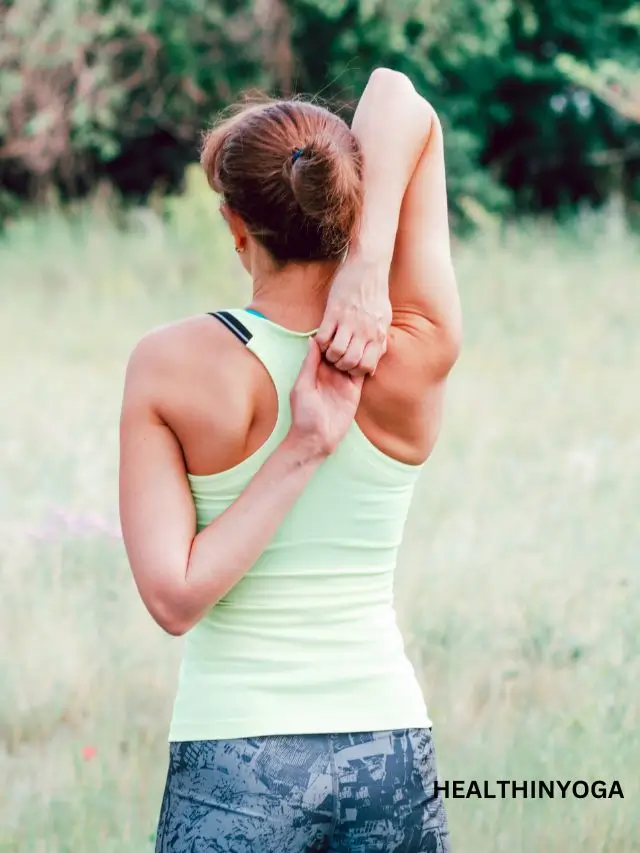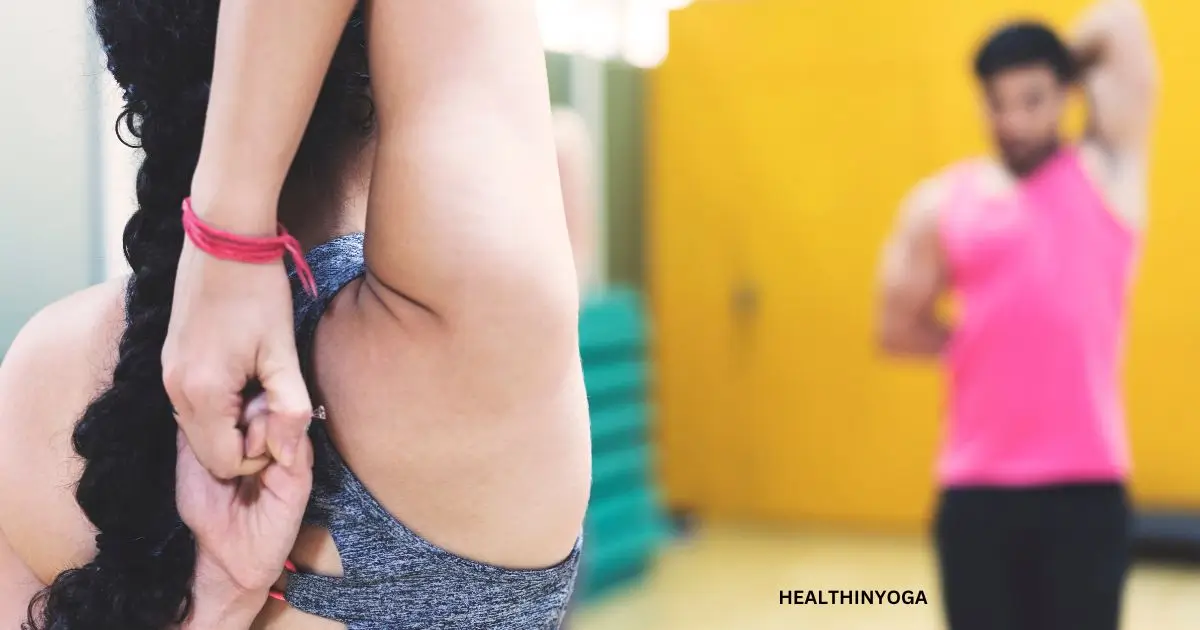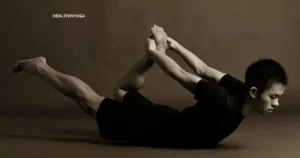Last updated on May 28th, 2024 at 11:05 am
Introduction
Mindful integration of the traditional Mountain Pose and Cow Face Arm Pose. The standing cow face pose is known as “Tadasana Gomukhasana”, A Sanskrit language word
Tadasana – Mountain Pose
Gomukhasana – Cow Face Arm Pose
This pose is an excellent variation of a typical traditional tadasana and offers numerous health and mental benefits. It involves strength, flexibility, and expansion of muscles, a holistic approach for the body, soul, and mind.
This variation of tadasana may be challenging for beginners but with ease modified according to your body’s abilities. Adding this pose to your yoga routine can improve your respiratory system, lower the risk of the artist, and relieve nerve pain.

Basic Of Standing Cow Face Pose
Level – Beginner
Position – Standing/Bending
Target Muscles – Arms, Shoulders, Biceps, and Triceps
Benefits Of Standing Cow Face Pose
This pose activates the muscles of the shoulder and back, and arm stretching prevents the risk of arthritis. Includes both pose benefits in one combined pose. Here are some benefits
- Improve Flexibility and stretching of arms, shoulders, chest, and hips. It enhances flexibility and mobility (Range of motion).
- Improve strength, and engagement of core, shoulder, and leg muscles. It helps strengthen these muscles and improve balance and stability.
- Keep breathing throughout the posture improve deep breathing and relax the mind, this will promote relaxation and reduce anxiety and depression.
- This pose focuses on alignment, flexibility, and balance, and stretches the spine long, shoulder, and back which can help improve overall posture, and help with sunken chest and hunch back.
How To Do Standing Cow Face Pose
This pose is ground practice a standing pose helps to open the chest and shoulder. Here are the step-by-step instructions below, read it carefully before performing this pose.
- Stand straight in the mountain pose with your feet hip-width apart and arms at your sides.
- Inhale, raise your right arm above your head and palm facing forward.
- Exhale, bend your right elbow, and stretch your hand down your back to the shoulder blade.
- Inhale open your left hand outward, bend the left elbow, and stretch your left hand up your back toward your right hand.
- Try to join both hands together behind your back, if you are not able to join your hands use a strap or towel to join them.
- Ensure your spine has a long stretch and the chest is lifted upward, hold the posture for 5-10 breaths.
- To release the pose unjoin both hands, lower the arms at your sides, and relax.
- Repeat the same pose with the other side, try for 3-4 times with both sides.
Other Variations Of The Mountain Pose
- Mountain Pose Variation For Enhancing Balance and Coordination (The Five-Pointed Star Pose & Standing Pelvic Circles)
- Mountain Pose, Arms Should Be At 45 Degrees (Palm Tree Mountain Pose)
Who Should Avoid Standing Cow Face Pose
Performing this pose accompanies some contraindications and needs some precautions. Here some risk factors includes, must be read before practicing this pose.
- Those with knee and hip injuries should avoid practicing this pose cause of pain and strain or worsen the injury.
- A person with severe shoulder rotation and shoulder pain issues avoids practicing this pose causing rotatory cuff injuries and shoulder impingement syndrome (SIS).
- The person with hypertension (High Blood Pressure), should avoid practicing this pose or try other modifications.
- If feeling pain and discomfort during practice, avoid or stop this pose, which causes injury, and chronic pain.
- Pregnant women and senior citizens who have balance issues, take a wall support or practice this pose under an experienced yoga instructor.
Frequently Asked Questions
Q1. What are the side effects of Gomukhasana?
Ans. People with hip, arm, and shoulder injuries should avoid doing cow face yoga. In case of a knee injury, modify the pose by straightening the legs or simply crossing the legs like Sukhasana. Avoid Gomukhasana in case of tissue, ligament, and tendon injury.
Q2. Is Gomukhasana good for health?
Ans. Gomukhasana is a great yoga pose for building strength in your upper body and toning your arms. It targets your shoulders, triceps, chest, and upper back. Practicing this pose regularly can help grow and define these muscles.
Q3. Can we do Gomukhasana after a meal?
Ans. No, it is not recommended to do Gomukhasana after a meal. Yoga poses, including Gomukhasana, should be practiced on an empty stomach or at least 2-3 hours after eating to avoid discomfort and achieve the best results.
Q4. Is Gomukhasana good for obesity?
Ans. Yes, Gomukhasana can be beneficial for obesity. This yoga pose helps improve flexibility, reduce stress, and increase upper body strength. Gomukhasana can support weight loss and overall fitness with a healthy diet and regular exercise.
Q5. What asana is similar to Gomukhasana?
Ans. A yoga pose similar to Gomukhasana is Garudasana, also known as Eagle Pose. Both poses involve intricate arm and shoulder positions that improve flexibility and strength in the upper body.
Conclusion
The standing cow face pose(Tadasana Gomukhasana) is a good combination of the mountain pose and the cow face arms pose. Including both pose benefits, this variation is a challenging approach to target specific muscles including shoulders, arms, and legs.
This pose introduces your body to new challenges and difficulties and helps improve growth, core strength, and balance. It is also a warm-up yoga pose that prepares the body for future intense yoga poses and daily yoga routines.
If you have any queries or suggestions, please leave a comment. We will pleased to answer all your queries. Thank you.

Honey is a certified yoga teacher from Patanjali Yogpeeth, Haridwar. Through the learning process, she realized, that yoga can be helpful in the wellness of one’s life.




